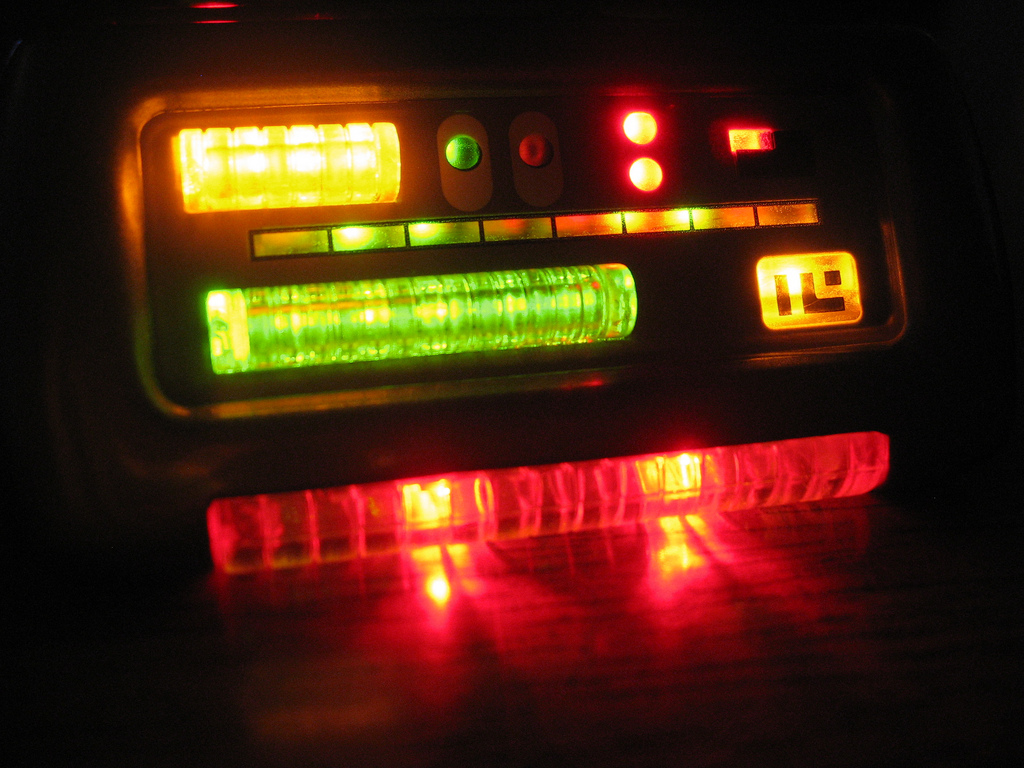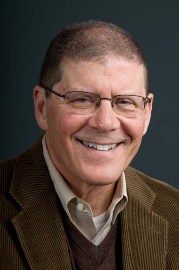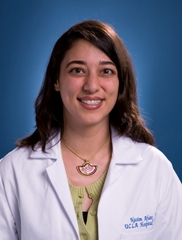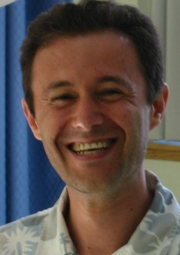
As the stuff of science fiction starts to seem possible in the world of healthcare — from reversing aging to microscopic body monitors — Zócalo asked five doctors, humanists, and medical experts what single technology will most revolutionize the practice of medicine. Their answers include what we already have — apps and electronic records — to the ultimate shift, defeating death.
How the iPhone has doctors beat
Certainly technological interventions have transformed medicine: the stethoscope, penicillin, polio vaccines, and anesthesia being at the top of my list. In other instances, technologies that have made the biggest impact have been simple, human communication strategies: patient-centered communication to assure tailored decisions and the recent “checklist manifesto” that can assure consistent quality care. In many ways, our intervention-based technologies have gotten in the way of sane healthcare, and the more we can stay out of the medical center, the better. Mobile health technology is actually working to direct patient-centered messages that can support people and community-based care providers in preventing and managing illnesses. In the U.S., one of the top-selling iPhone applications is directed at counting calories and weight-management targets. This 99-cent innovation significantly impacted diet and exercise behaviors – arguably the area that hurts us most in the North – in a time when medicine has long since given up on being able to change behavior and moved to simply prescribing pills instead. Developing communication strategies (interpersonal as well as mobile-technology enabled) could be the best technology medicine can use to guide people toward healthy choices and contribute to positive health impacts.
–Kelly Edwards is an Associate Professor in the Department of Bioethics and Humanities at the University of Washington School of Medicine.
—————————————————————————————————————
The end of death?
 The single most technological advancement that will revolutionize the practice of medicine, and for which doctors are most unprepared, is the possible defeat of death.
The single most technological advancement that will revolutionize the practice of medicine, and for which doctors are most unprepared, is the possible defeat of death.
During the past 40 years significant changes have occurred in relation to the way in which we think about death. Previously, death was thought of as ordained by God, part of the divine order. More recently, in a fully naturalized world, death was thought of as inevitable, a fact that follows from the way we are biologically constructed. If it was not the case that a divine order underlay the world, at least the natural world had its own order. Even more recently, the idea that death is “natural” began to be interpreted as death is “inevitable.” There is, simply, no way to avoid it.
Interestingly, there is a certain comfort in all these perspectives. Death is part of the divine order (God is in charge), death is part of the natural order (at least nature is predictable), and then finally death is inevitable (at least we can make our peace with it).
But what is death? Increasingly, it seems, death is understood as the wearing out of body parts, or organs, or biological systems. If one looks through the obituaries of the past 40 years one will see a very significant change. At some point, it became a requirement that the cause of death be clearly indicated. The result is that one can read an obituary and think, “If I only avoid what he or she died of, I can avoid death.”
Ultimately, then, we are getting closer and closer to the point where death might end up being a choice. How will doctors counsel patients about this possible choice? This would be a very unsettling development for which we are entirely unprepared, and to which physicians have given no attention at all.
–Mark Sheldon is Distinguished Senior Lecturer in Medical Humanities & Bioethics at Northwestern University, and a former policy analyst for the American Medical Association.
—————————————————————————————————————
We already have the most revolutionary technology
 Interestingly, one of the technologic advancements that will revolutionize health care has been around for many years but not utilized widely: electronic medical records. In the coming years, EMR will play a key role in advancing the quality of patient care by providing the data required to track performance and therefore implement continuous improvement. It will help ensure that evidence-based medicine is implemented for patients through decision support tools, such as checklists. EMR will help promote patient safety through programs that check medication interactions and alert providers about critical patient conditions. Lastly, EMR will enable providers to effectively communicate with each other regarding various patient care issues.
Interestingly, one of the technologic advancements that will revolutionize health care has been around for many years but not utilized widely: electronic medical records. In the coming years, EMR will play a key role in advancing the quality of patient care by providing the data required to track performance and therefore implement continuous improvement. It will help ensure that evidence-based medicine is implemented for patients through decision support tools, such as checklists. EMR will help promote patient safety through programs that check medication interactions and alert providers about critical patient conditions. Lastly, EMR will enable providers to effectively communicate with each other regarding various patient care issues.
Currently, only one in 10 providers uses EMR. Providers rely on paper charts for communication, which often vary widely and are incomplete. This lack of standardized process leads to significant variations in communication, as well as the care delivered. At a time when decision-making should be based on the most up-to-date information, it is quite challenging to collect all the relevant information for one patient from the various providers involved in the care. These features of EMR will help create a standard, as well as accountability, for care. The future of medicine is providing the highest quality of care, in the safest manner possible. EMR will help accomplish this.
–Nasim Afsarmanesh is Director of the Hospital Medicine and Neurosurgical Clinical Quality Programs at Ronald Reagan UCLA Medical Center.
—————————————————————————————————————
Trekkie tech
It may seem too far-fetched and, for “Trekkies,” too familiar, but I think we’re not far from seeing something like a “tricorder” being used in medicine. Just as cell phones evolved from bulky bricks into flip phones resembling “communicators” in the same series, early tricorder prototypes will barely resemble the real McCoy – as it were.
Early prototypes will rely on blood and tissue samples – ouch! – and they will not be stand-alone devices. Interconnectivity will be a critical and enabling component, since these devices will need to have access to massive amounts of intelligently organized, personalized and analyzable data. By integrating many advances in cloud computing, search technology and bioinformatics, early tricoders will reach the level of artificial intelligence we need to meaningfully process a flood of person-specific data – a complete cataloguing of an individual’s proteins at the time of assessment. The protein and metabolite information generated by analyzing blood and tissue samples will then be connected to the entire medical history of that patient which will, of course, include their genetic template and epigenetic idiosyncrasies.
This type of technology has the promise of detecting incipient cancers when they are at their earliest stages. With other advances in nanotechnology and biomimetic electronics, new targeted treatments will be able to nip these cancers in the bud. Learning that pancreatic cancer, for example, takes an average of 15 years to develop before any symptoms are noticed underlines the importance of early detection coupled with targeted treatment. Our first generation of tricorders will be limited to early detection of a handful of diseases for which there are treatment options. They will serve as a rapidly-developing platform technology where advances in detection and treatment processes can be incorporated.
The introduction and evolution of tricorders will revolutionize the practice of medicine by making information and decisions more transparent to all involved. The practice of medicine will become, more and more, a shared and coordinated set of interventions. Who, when and what to do will be determined by a comprehensive, system-level understanding of biological processes enabled by technology.
–George Tolomiczenko is the Administrative Director of the HTE@USC program, a joint effort between USC’s Keck School of Medicine and Viterbi School of Engineering to teach medical students and engineering students how to work together to create innovative solutions to healthcare issues.
—————————————————————————————————————
Monitoring our elders
 As other advances in medicine, health and nutrition prolong life, the elderly population will grow disproportionally. Monitoring the health of this population in the traditional healthcare environment is not going to be feasible. Many patients whose routine care is traditionally managed in the hospital or clinic will have to be connected to their providers remotely, from their home.
As other advances in medicine, health and nutrition prolong life, the elderly population will grow disproportionally. Monitoring the health of this population in the traditional healthcare environment is not going to be feasible. Many patients whose routine care is traditionally managed in the hospital or clinic will have to be connected to their providers remotely, from their home.
Non-invasive, wearable sensors that measure and monitor physiological, chemical and physical variables will therefore revolutionize the practice of medicine the most in the coming decades.
It’s already possible to measure non-invasively certain physiological variables – heart rate, blood pressure, oxygen saturation, respiratory rate and volume, blood glucose concentration, hemoglobin concentration. Today, small monitors such as those in mobile phones can provide information on environmental conditions such as location, speed, acceleration, and elevation, and can provide audio and video transmission. Future advances in sensor technologies – enabling breath analysis and accessing small blood vessels in the inner eyelid – coupled with secure transmission of information over the Internet will allow a large battery of variables to be measured and relayed to virtually attending physicians in real time.
These devices will not only ensure close monitoring of patients’ conditions, but also have the capability of providing feedback to the wearer – such as “your heart rate is too high,” or “your blood sugar is too low.” Physicians will also have the option of remotely effecting treatment through these wearable technologies such as adjusting insulin doses or pacemaker variables. These remote monitoring and intervention capabilities will dramatically reduce the number of visits to healthcare facilities and streamline healthcare for elderly and chronically ill persons, ensuring high quality care despite heightened demands for efficiency.
–Selim Suner is Associate Professor of Emergency Medicine Surgery and Engineering at Brown University.
*Photos courtesy the participants. Photo of a Star Trek tricoder replica courtesy David July.




Send A Letter To the Editors